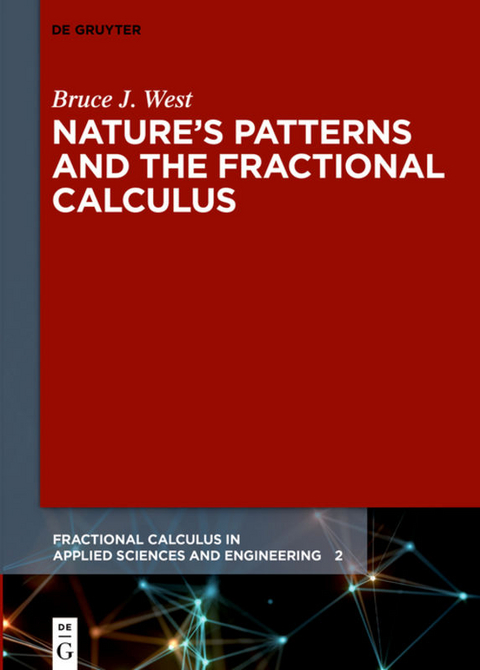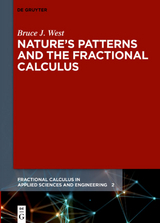Nature’s Patterns and the Fractional Calculus
De Gruyter (Verlag)
978-3-11-053411-5 (ISBN)
Bruce J. West, US Army Research Office, Cary, US
Table of Content:
Chapter 1: Complexity Science
1.1 It started with physics
1.2 Complexity
1.3 Measures of size
1.4 Allometry heuristics
1.5 Overview
Chapter 2: Empirical Allometry
2.1 Living networks
2.2 Physical networks
2.3 Natural history
2.4 Sociology
2.5 Summary
Chapter 3 Statistics, Scaling and Simulation
3.1 Interpreting fluctuations
3.2 Phenomenological distributions
3.3 Are ARs universal?
3.4 Summary
Chapter 4: Models & Derivations of ARs
4.1 Optimization principles
4.2 Scaling and allometry
4.3 Stochastic differential equations
4.4 Fokker-Planck equations
4.5 Summary
Chapter 5: Complex and Strange Kinetics
5.1 Fractional thinking
5.2 Fractional rate equations
5.3 Fractional Poisson process
5.4 A closer look at complexity
5.5 Recapitulation
5.6 Appendix
Chapter 6: Fractional Probability Calculus
6.1 Fractional Fokker-Planck equation
6.2 Fully fractional phase space equations
6.3 Entropy entails allometry
6.4 Statistics of allometry parameters
6.5 Discussion and conclusions
6.6 Epilogue
| Erscheinungsdatum | 15.09.2017 |
|---|---|
| Reihe/Serie | Fractional Calculus in Applied Sciences and Engineering ; 2 |
| Zusatzinfo | 48 b/w and 8 col. ill. |
| Verlagsort | Berlin/Boston |
| Sprache | englisch |
| Maße | 170 x 240 mm |
| Gewicht | 505 g |
| Themenwelt | Mathematik / Informatik ► Mathematik ► Analysis |
| Technik | |
| Schlagworte | Anatomy & Physiology (see also Life Sciences • Applied • Applied mathematics • Complex Analysis • Developmental Biology • ENTSTEHUNGWERKE • Goethe • Human Anatomy & Physiology • Human Anatomy & Physiology) • Infinitesimalrechnung • Life Sciences • Mathematical & Computational • Mathematics • Mathematik • Nonlinear and Complex Systems • Physics • Science • System Theory • Technik |
| ISBN-10 | 3-11-053411-8 / 3110534118 |
| ISBN-13 | 978-3-11-053411-5 / 9783110534115 |
| Zustand | Neuware |
| Haben Sie eine Frage zum Produkt? |
aus dem Bereich




